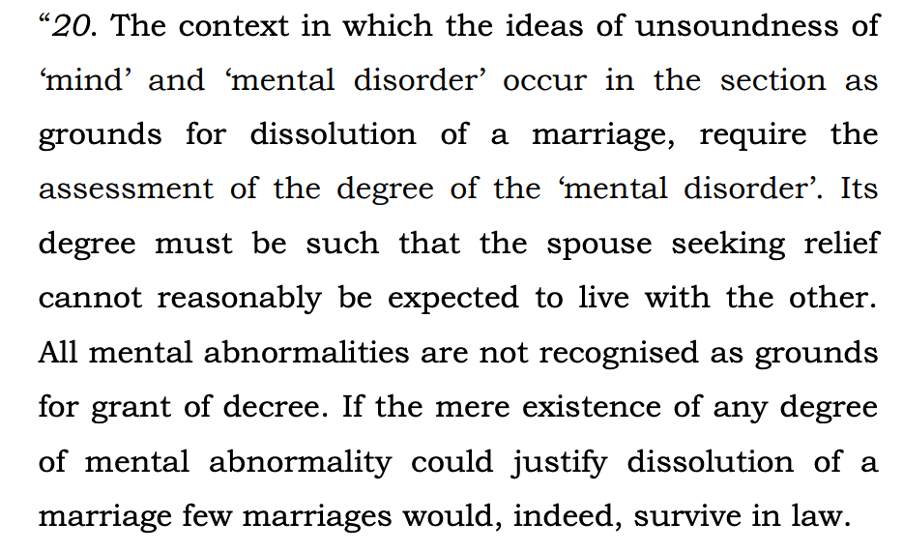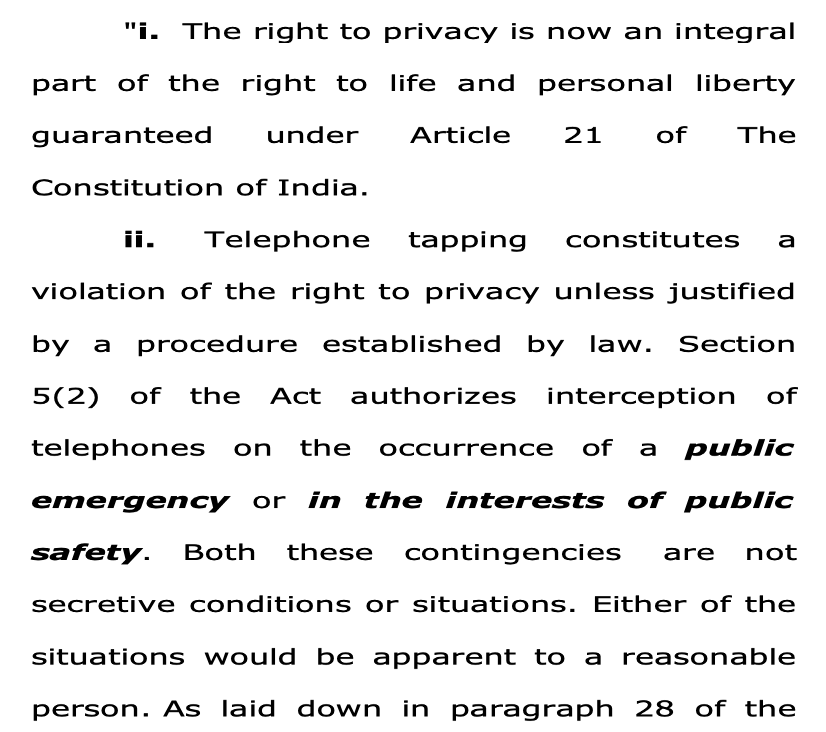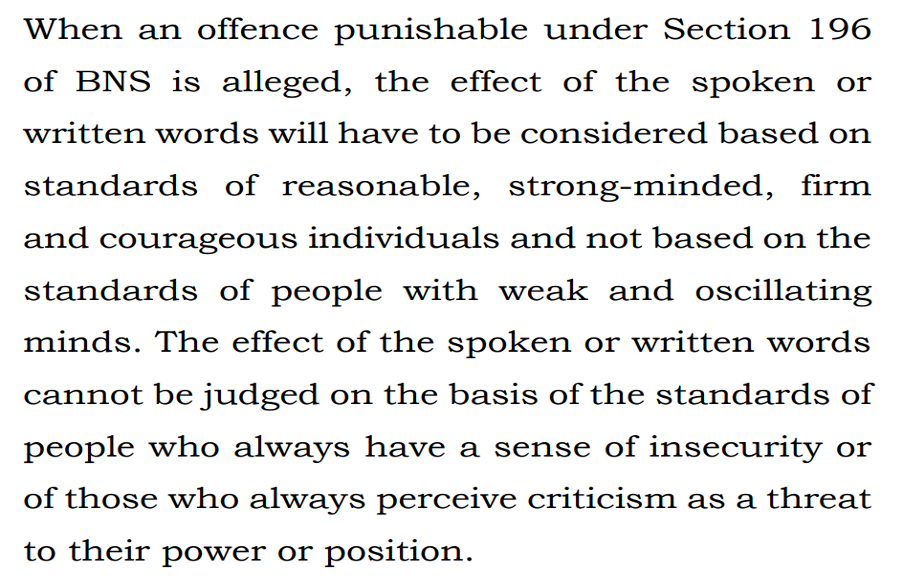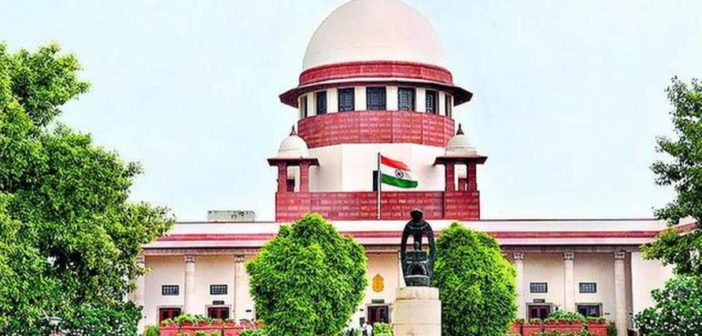In this edition of Court judgements, we look at the Supreme Court’s decision on compensation in Motor accident claims to Legal heirs, Jharkhand High Court’s judgement on claims of mental illness for divorce, Allahabad High Court’s decision on indecent images in social media, Madras High Court’s judgement on Phone Tapping and Andhra Pradesh High Court’s circular to magistrates for violation of SC guidelines.
Supreme Court: Legal Heirs of negligent driver can’t claim compensation under Motor Vehicles Act
In G. Nagarathna & Ors. vs. G. Manjunatha & Anr, the Supreme Court reaffirmed that family members of a deceased driver cannot claim compensation under the Motor Vehicles Act when the driver caused the accident through negligent driving.
The bench of Justices PS Narasimha and R Mahadevan upheld the Karnataka High Court’s decision rejecting the compensation claim filed by the deceased’s family under Section 166 of the MV Act, 1988.
N.S. Ravisha died when his Fiat Linea overturned due to his rash and negligent high-speed driving. His wife, son, and parents sought ₹80 lakhs in compensation from the Motor Accident Claims Tribunal (MACT), Arasikere.
The Tribunal dismissed the claim, ruling that Ravisha was the wrongdoer who caused the accident, disqualifying his family from compensation. The High Court upheld this decision.
Citing Ningamma vs. United India Insurance Co. Ltd. (2009), the High Court held that “since the accident resulted from the deceased’s own negligent driving, making him the self-tortfeasor, his family cannot claim compensation as it would reward the wrongdoer for his own misconduct.”
The family argued that since the deceased wasn’t the vehicle owner, the insurance company remained liable. The High Court rejected this, referencing Minu B. Mehta vs. Balkrishna Nayan (1977), stating that by borrowing the vehicle, the deceased assumed the owner’s position, making the insurance company not liable for injuries caused by his own negligence.
Accordingly, the Supreme Court found no grounds to interfere and dismissed the petition.
Jharkhand HC: Mere existence of a mental disorder does not justify dissolution of a marriage.
In X v. Y, the Jharkhand High Court dismissed a husband’s appeal seeking divorce under the Hindu Marriage Act, 1955. The husband had earlier approached the Family Court in Chatra, claiming his wife was cruel, deserted him, and was mentally ill. However, both the Family Court and the High Court found no credible evidence to support any of these claims. The High Court held that divorce petitions citing a spouse’s mental illness under Section 13(1)(iii) of the Hindu Marriage Act, 1955 require substantial and credible proof.
The couple married in February 2017. The husband claimed his wife had concealed a medical condition, mistreated him and his family, and threatened suicide. He also accused her family of making financial demands and threatening false dowry cases. On these grounds, he sought divorce under Sections 13(1)(i-a), (i-b), and (iii) of the Hindu Marriage Act. The wife denied all the allegations and argued that she was ousted from the marital home and not the one who deserted the relationship.
The High Court noted that cruelty must be serious and proven, not vague or routine marital issues and that no medical documents were presented to prove mental illness. Regarding the mental illness allegation, the court affirmed the Family Court’s finding that no documentary proof was presented. The Apex court, in Kollam Chandra Sekhar vs. Kollam Padma Latha emphasised that proving mental disorder requires concrete evidence such as psychiatric opinions or treatment documentation.

The High Court concluded that the husband’s case was built on unsubstantiated allegations and lacked credible proof. It found no reason to interfere with the lower court’s decision and dismissed the appeal, denying the request for divorce.
Allahabad HC: Indecent pictures when circulated on public platforms by social media can destroy lives.
The Allahabad High Court, in Ramdev vs. State of U.P, held that digital technology is altering the face of crime. Indecent pictures of a person, when circulated on public platforms by social media, can destroy lives. The offenders have to be booked, and the trial has to be concluded in an expeditious time frame.
In this bail application, the accused sought release in a case at Prayagraj for allegedly circulating indecent photographs via WhatsApp under 74, 352, 351(2), 64(1) B.N.S. and Section 67A I.T. Act. The applicant has been in custody since 09 January 2025, after the trial court rejected his bail on 23 April 2025.
The court firmly rejected bail, identifying the accused as the principal offender in a grave crime. The prosecution showed that indecent photographs were circulated through social media, with recovered images sent for forensic examination. The court emphasised the serious nature of the offence and the likelihood of the applicant’s involvement.
The court made significant observations about cybercrime’s evolving nature, noting that digital technology is fundamentally altering criminal behaviour. When indecent pictures are circulated on public platforms, they can destroy lives completely, a harsh social reality that informed the court’s serious approach to such cases.

Rather than simply dismissing the bail application, the court issued comprehensive directions to expedite the trial within one year, drawing from Section 309 CrPC’s legislative intent. The court referenced precedents from Bhanwar Singh @ Karamvir vs. State of U.P. and Jitendra vs. State of U.P., which refer to certain directions to the police authorities regarding their statutory duty to promptly serve summons and execute coercive processes to compel the appearance of witnesses.
The Court also held that in case any accused person who has been enlarged on bail does not cooperate in the trial or adopts dilatory tactics, the trial court shall record a finding to this effect and cancel the bail without recourse to this Court. Further, the court established robust monitoring mechanisms, directing weekly progress reports and FSL report production within two months. Accordingly, the bail application is dismissed.
Madras HC: Telephone tapping constitutes a violation of the right to privacy unless justified by a procedure established by law
In a key ruling on surveillance and privacy, the Madras High Court quashed a 2011 government order that had authorised the tapping of businessman P. Kishore’s phone during a corruption probe involving a senior Income Tax officer. The Court ruled that the interception order violated the constitutional right to privacy, as it did not meet the strict legal standards required under the Indian Telegraph Act and the Telegraph Rules.
The background of the case involves a CBI investigation into a ₹50 lakh bribery case where P. Kishore, then Managing Director of Everonn Education, was accused of paying off an Income Tax officer. Although the money was recovered from a third party and not directly from Kishore, the authorities had intercepted his phone calls based on an order citing “public safety” and “public order.”
Kishore challenged the surveillance, arguing that it was unconstitutional and lacked proper justification. He cited landmark judgments, including PUCL vs. Union of India and K.S. Puttaswamy, which recognised privacy as a fundamental right under Article 21 of the Constitution. He also argued that the interception orders were vague, mechanically worded, and failed to demonstrate a real threat to public safety, a key requirement under Section 5(2) of the Indian Telegraph Act, 1885.
The government defended the phone tapping by saying it was necessary for investigating corruption and maintaining public confidence in institutions. However, the Court rejected this argument, holding that vague claims of public safety or institutional reputation do not meet the threshold of a “public emergency” or threat to public safety as defined under law.
Citing multiple precedents, the Court reiterated that surveillance without strict procedural safeguards is unconstitutional. It also emphasised that surveillance powers must be used sparingly, and only when there’s clear evidence of an imminent threat to public safety or sovereignty. In this case, those conditions were not met.
The High Court concluded that the order authorising phone tapping was issued without adequate application of mind and in violation of the petitioner’s fundamental rights. It quashed the interception order and held that any evidence gathered through such unconstitutional surveillance could not be justified under the law.

Andhra Pradesh HC: Magistrates should comply with SC guidelines before remanding accused or face legal action.
The Andhra Pradesh High Court has issued a circular reminding Judicial Magistrates to strictly follow Supreme Court guidelines before remanding individuals accused in multiple FIRs related to social media posts, especially when the alleged offences carry a maximum sentence of less than seven years.
This directive comes in the wake of growing concerns that remand orders are being passed mechanically in such cases without verifying whether the police followed due process. The High Court referred to two key Supreme Court rulings: Arnesh Kumar vs. State of Bihar (2014) and Imran Pratapgarhi vs. State of Gujarat (2025). In Arnesh Kumar, the top court laid down specific conditions for arrest and remand in offences punishable with less than seven years. It emphasised that arrest should be the exception, not the rule, and custodial interrogation must be justified.
More recently, in Imran Pratapgarhi, the Supreme Court held that when the offence relates to speech, writing, or creative expression, the police must first conduct a preliminary inquiry approved by a Deputy Superintendent of Police before registering an FIR. This inquiry must be completed within 14 days. The judgment aimed to prevent the misuse of criminal law to silence free expression.

In light of these rulings, the High Court instructed magistrates to ensure that remand is granted only when custodial interrogation is truly necessary and there is a possibility of the accused tampering with evidence or threatening witnesses. The circular warned that any deviation from these instructions would be taken seriously and could attract contempt proceedings and departmental action against the erring magistrate.



